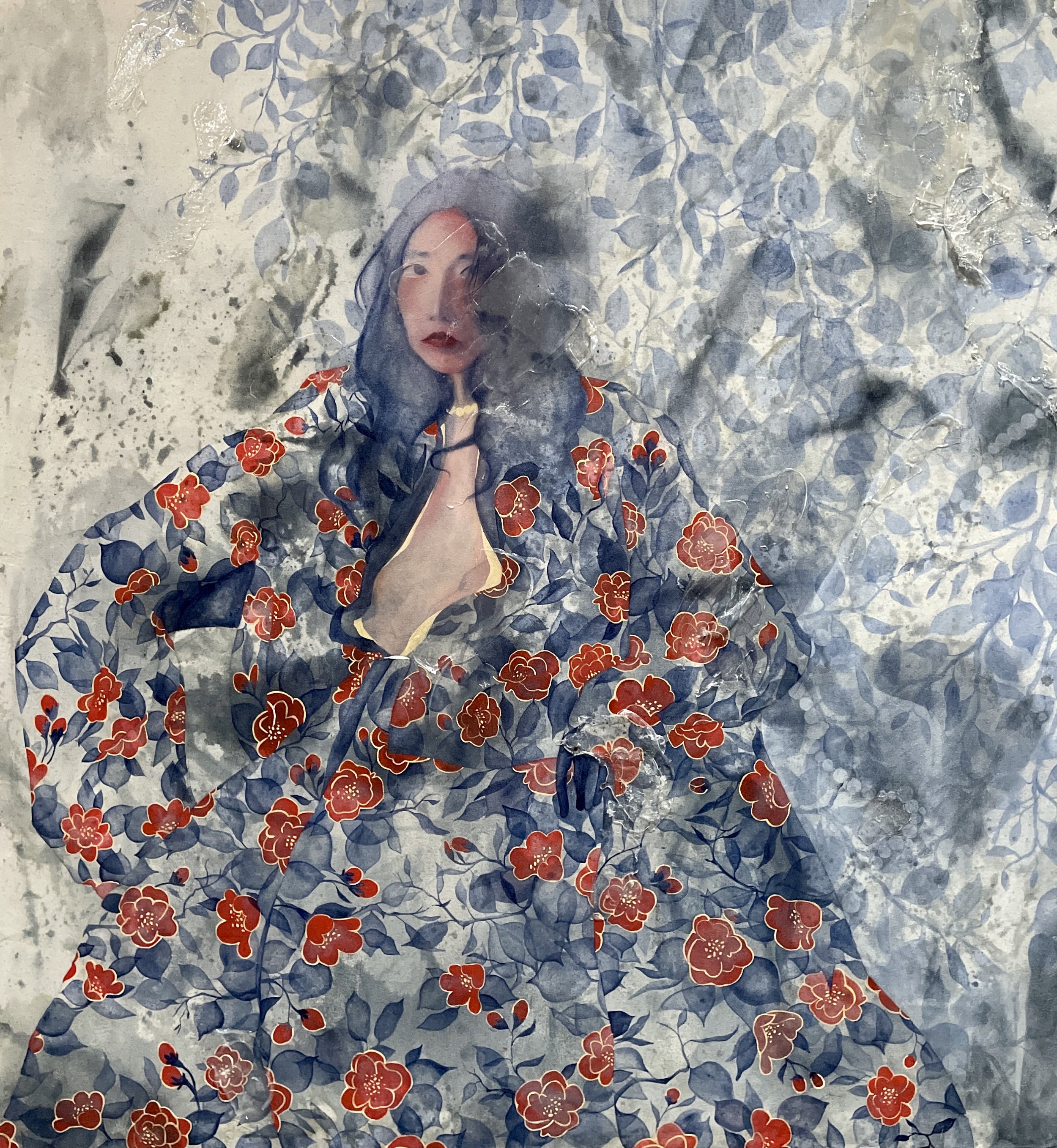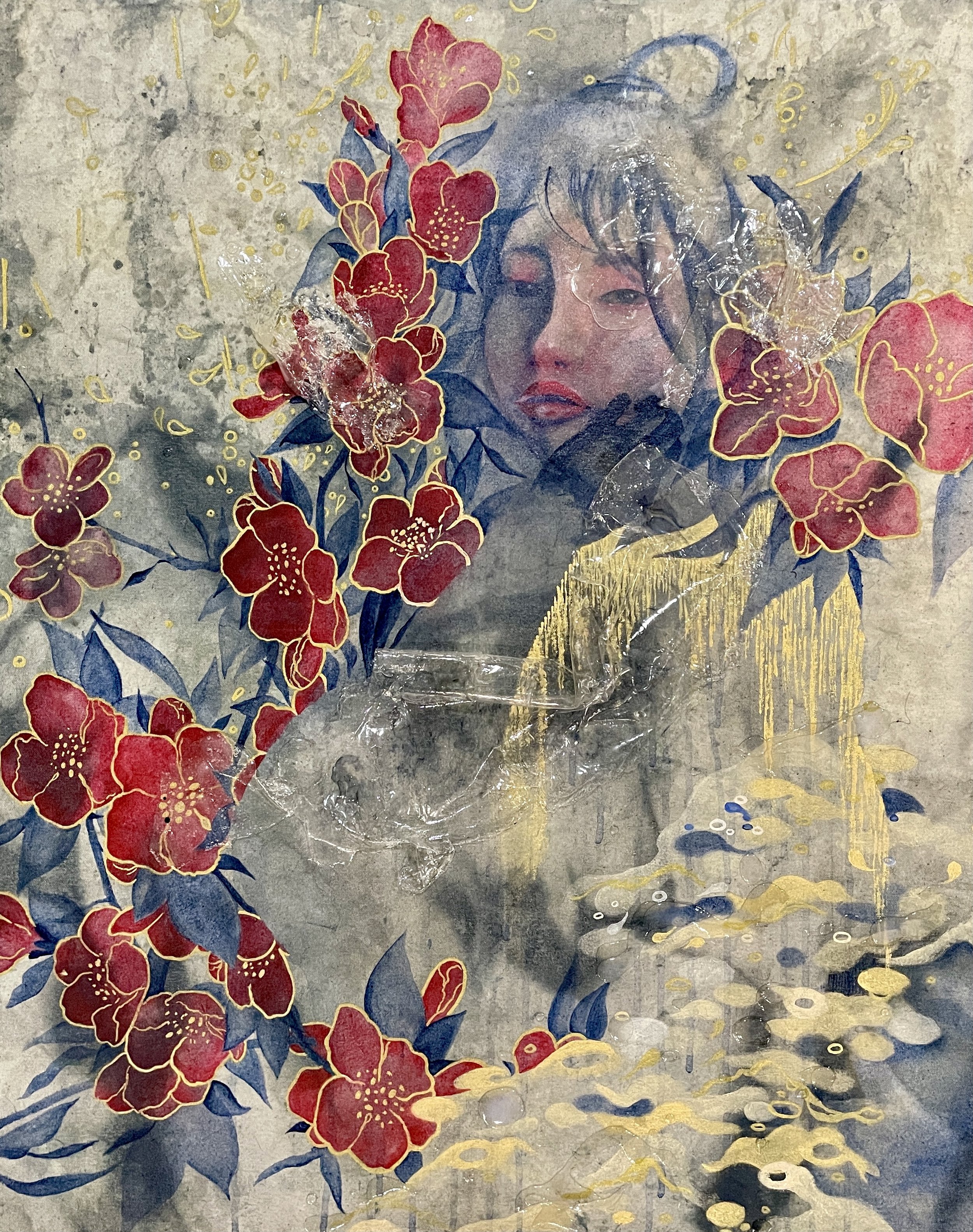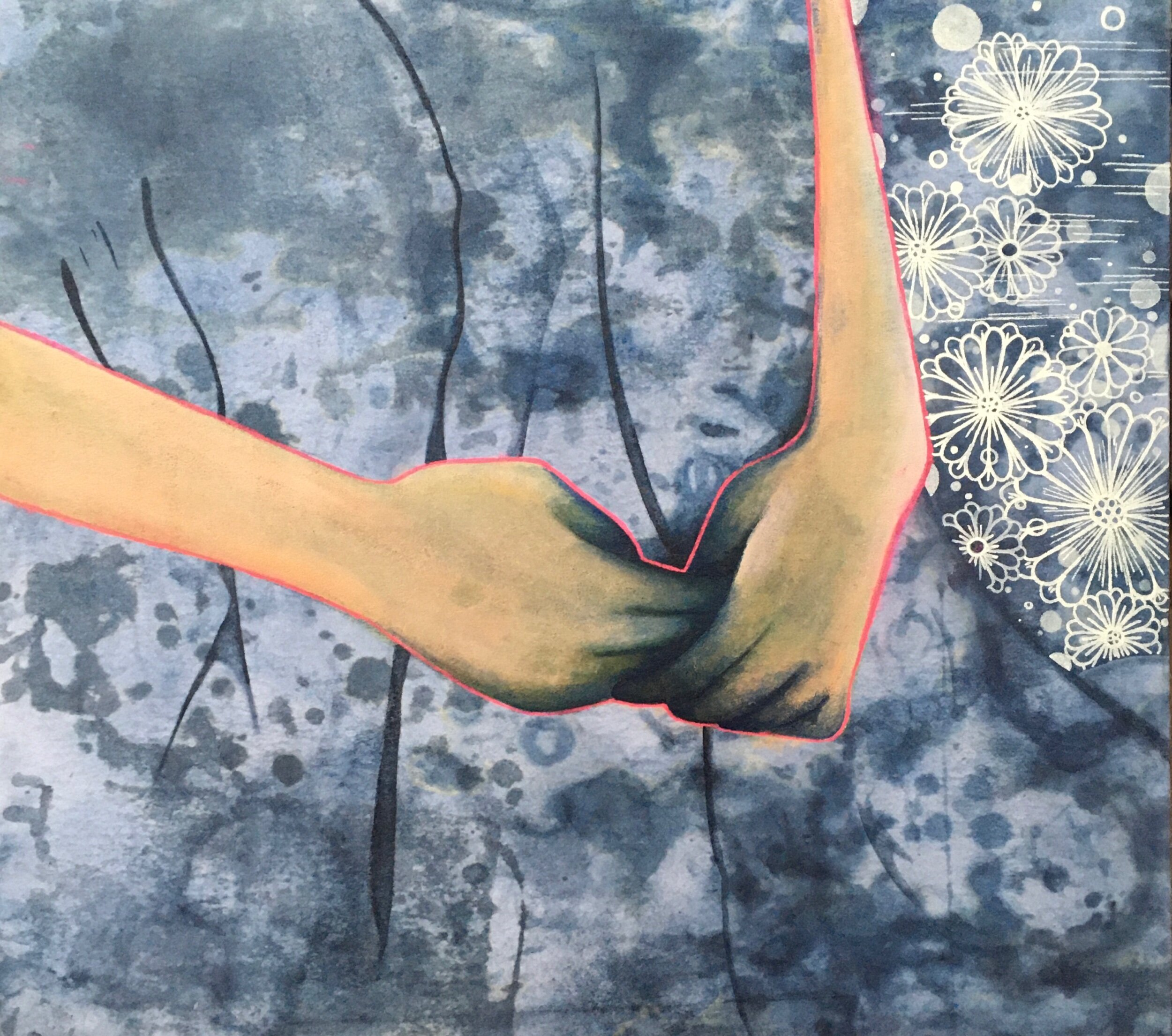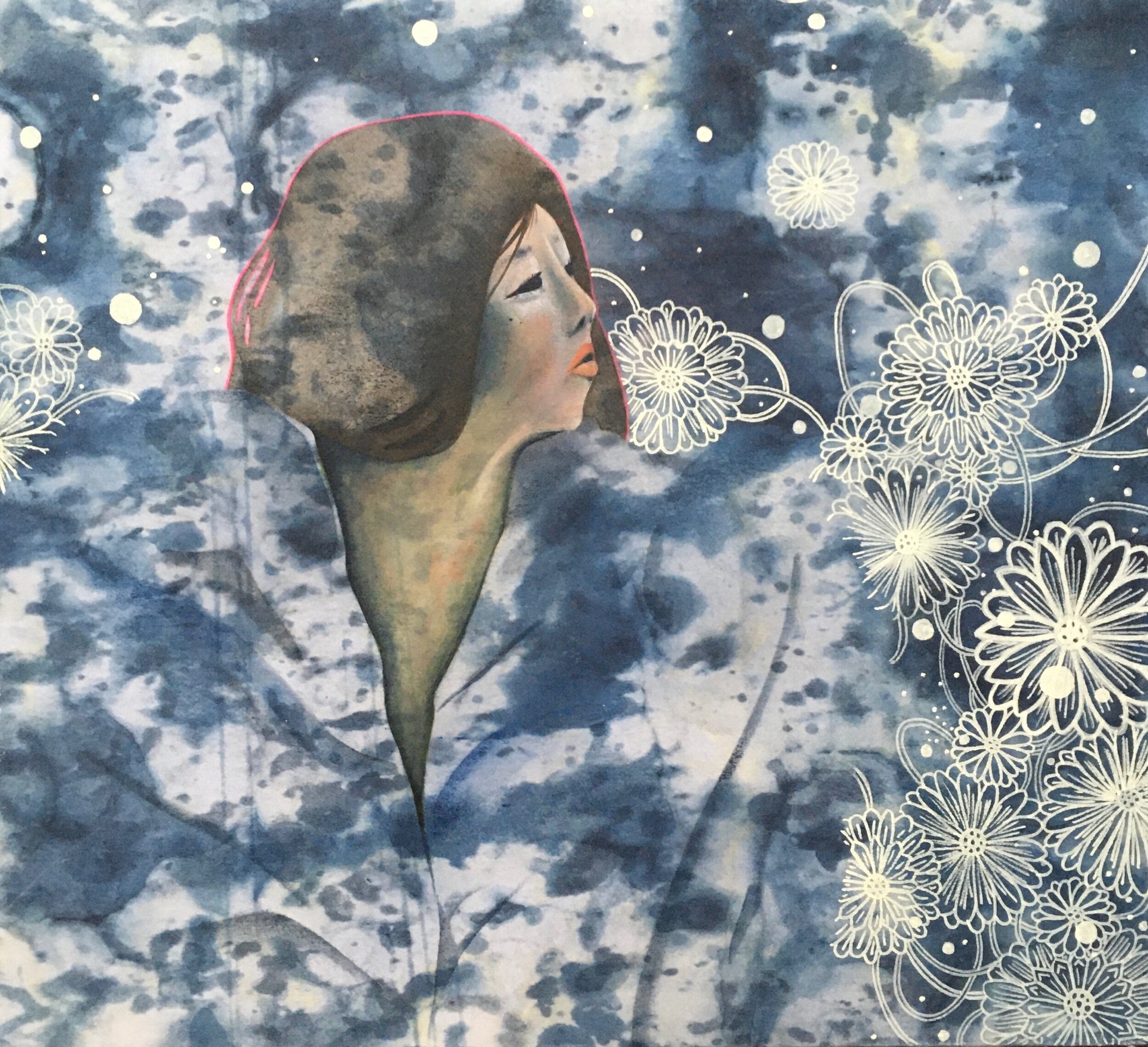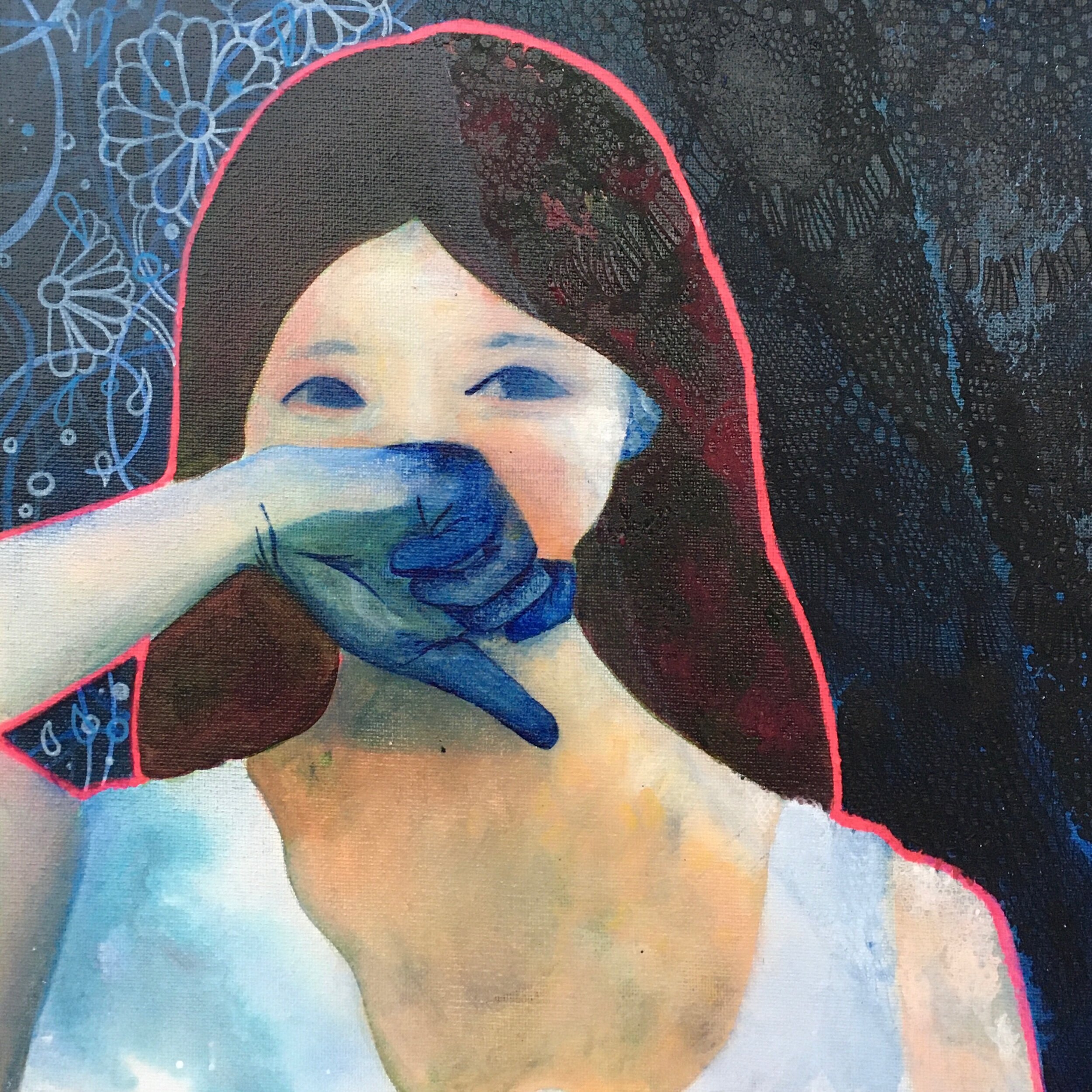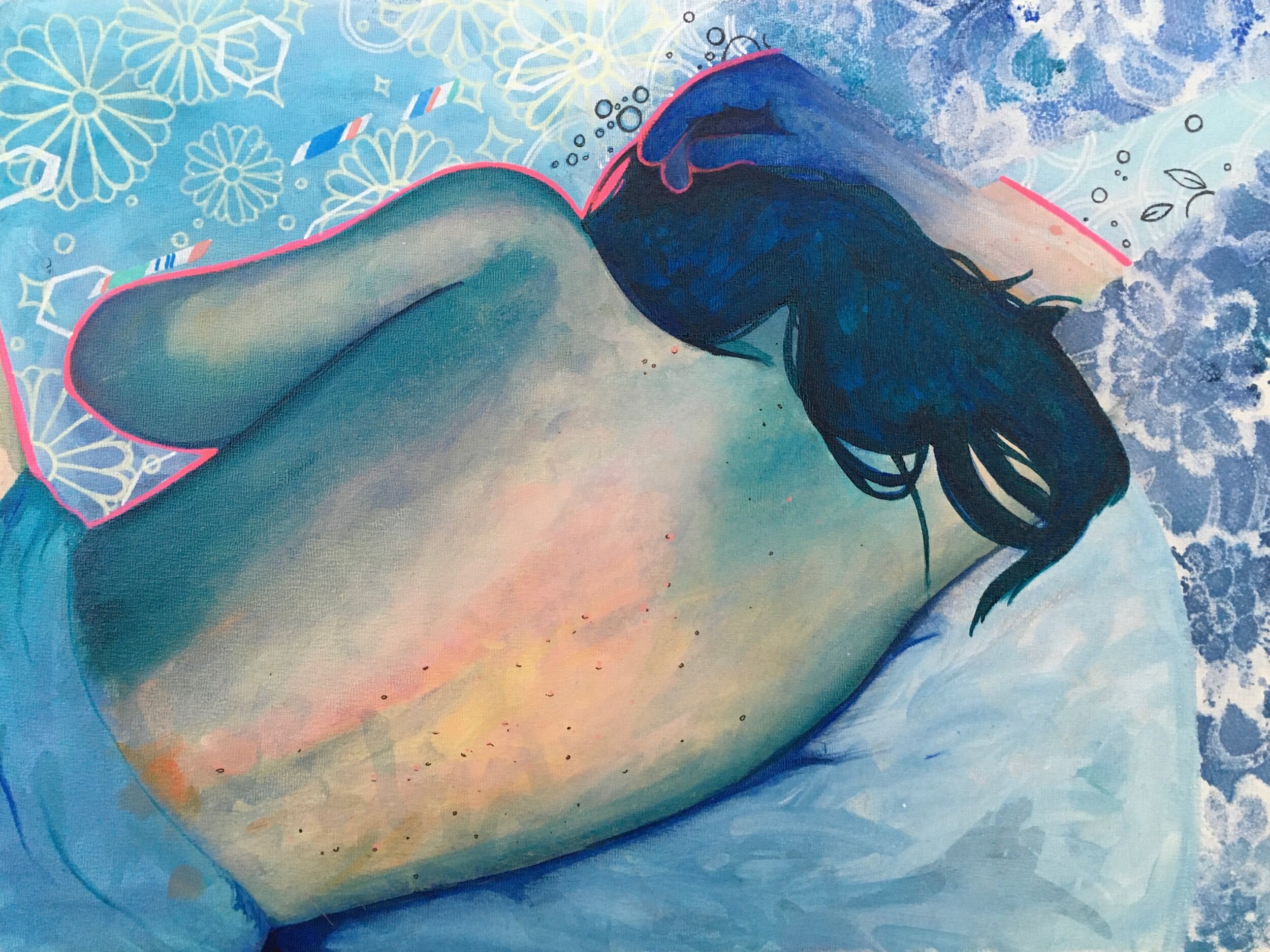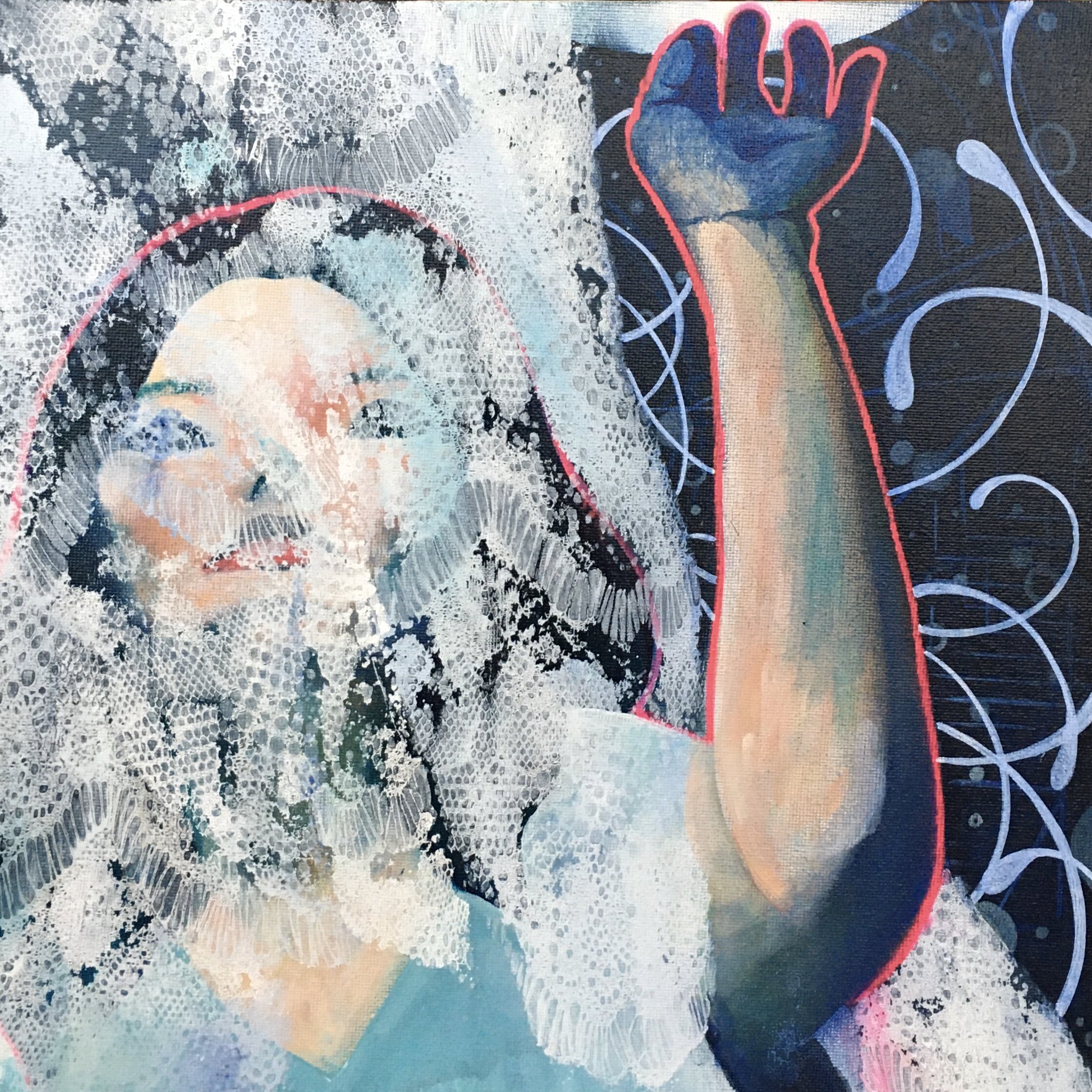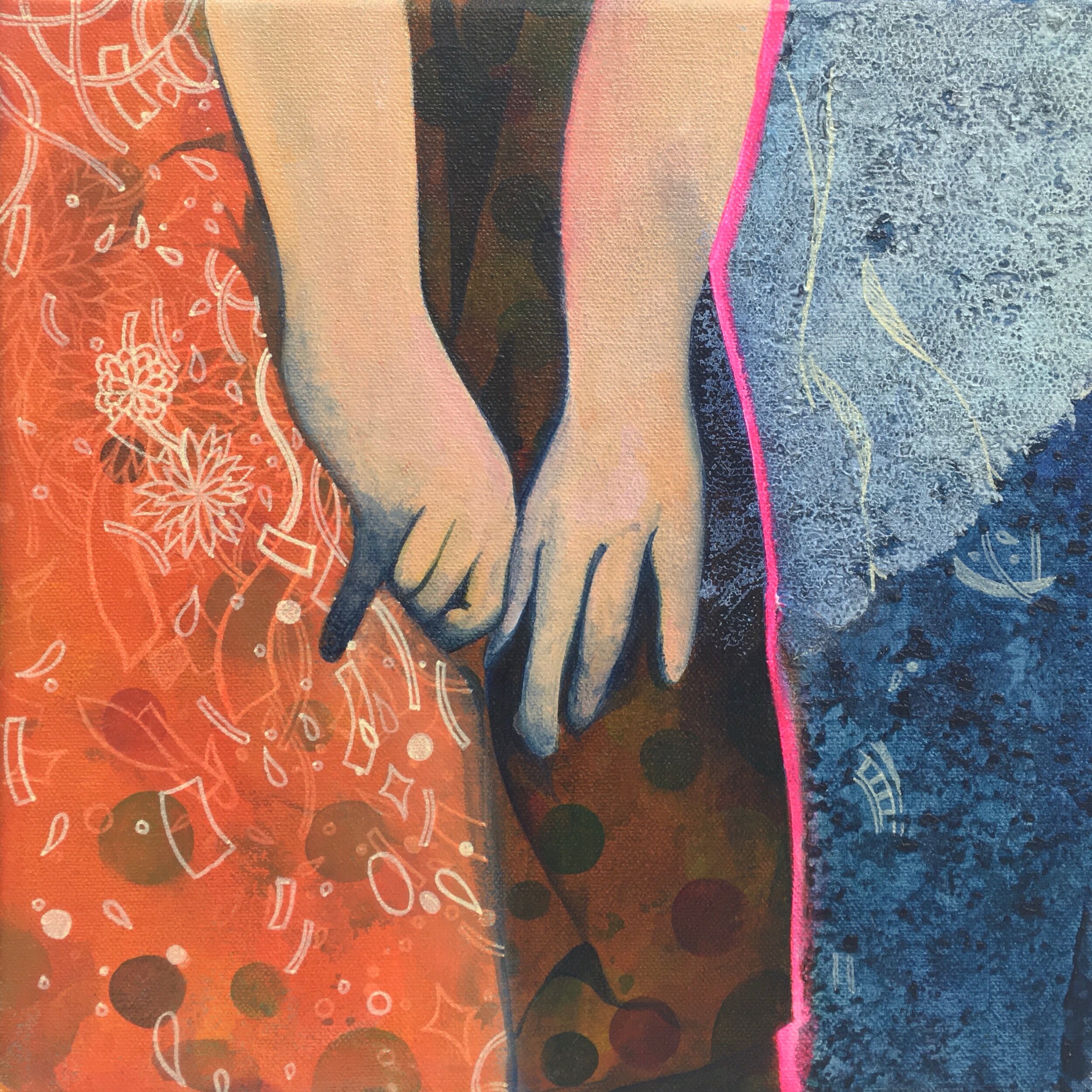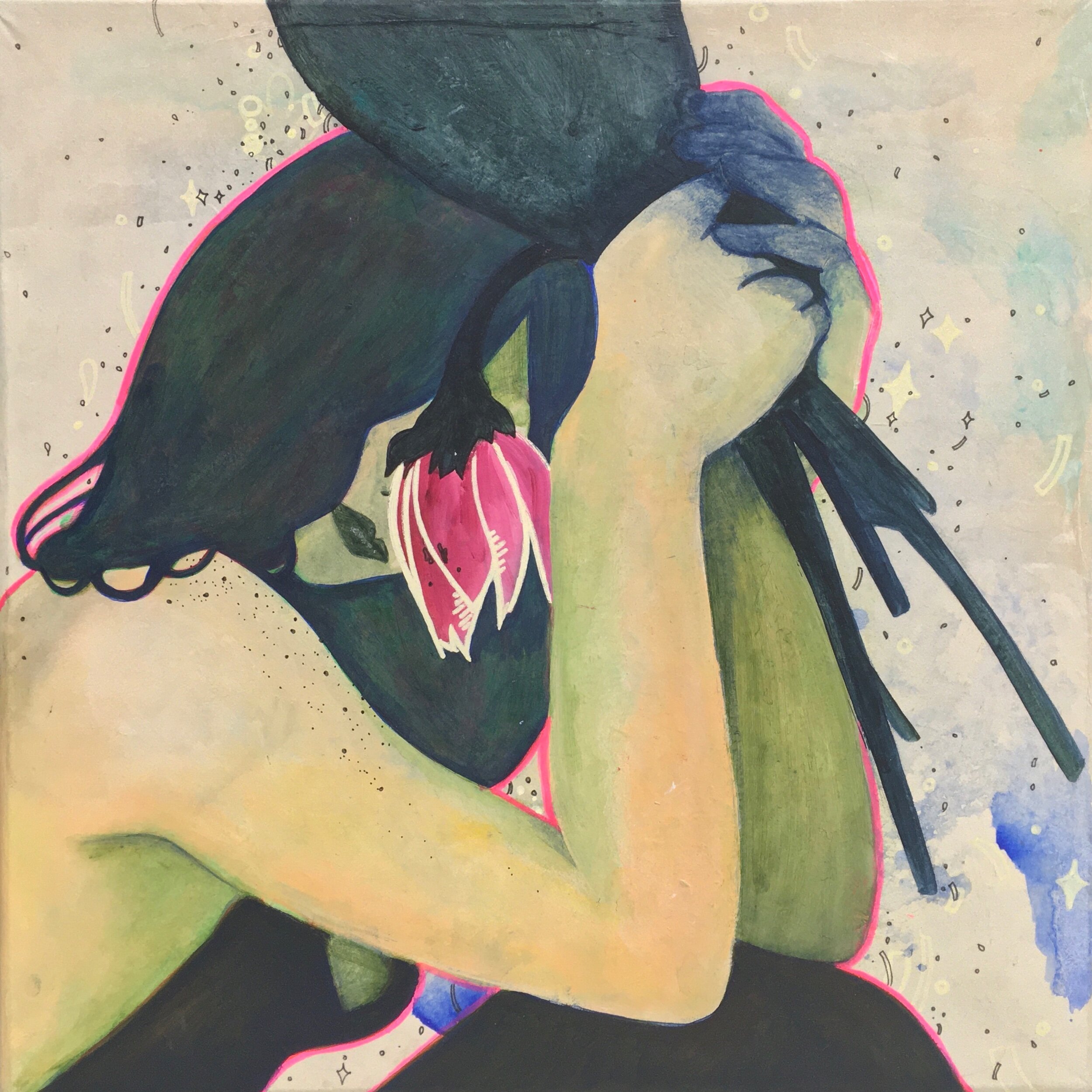Artist Statement about the work:
Aren’t we all contaminated by from where we come? As much as we might try to convey ourselves in adulthood as polished and serene, we are super-melodic: songs from a past we can’t remember properly (because we are no longer there). This is especially true from the position of an adopted person who in youth is trying to ascertain who she is going to become. In this series paintings by Kelli Maeshiro, the figure recognizes that she is not meant to arrive anywhere. That the idea that the figure has a natural location or place to be is a farce. Despite all the pressures that imply she is meant to stare directly at her audience and make her entirety available to an artist’s gaze, she is exercising her right to refuse. She is cognizant that there are parts of herself that she cannot know. That there are facets of her past that cannot be reconciled through looking into someone else’s eyes. Maeshiro’s work reflects, then, a sense of coyness, refutation, and grief. Rather than some clean return to a fully-imagined past, Maeshiro has drawn over the painted glaze, geometric shapes and Japanese kimono patterns (sourced from her grandmother, a traditional Japanese doll-maker).
The women represented here are embracing what it means to turn away. To reject the idea that we are meant to be knowable. Valuable only insomuch as we are willing to be encountered. Instead these women are embracing what it means to be lost in themselves. Lost in the color palette of women who came before them and will come after--women they have never known but feel intimately. These paintings involve drawing on top of many layers of shapes and washes. Foggy and dreamy memories are supplanted, but still present, amidst precise floral motifs. It seems that for Maeshiro these works come from a place in her which one could call nowhere, but one could also call the extension of her childhood into a dreamscape of the present-day. These women claim power in not-looking, looking elsewhere, and looking away. We are fortunate to witness them in moments of discovery: Maeshiro has bore witness to women who are beginning to give themselves permission to say that what they have always needed to say, to people who are feeling what they have always had the right to feel.
***
women they may never know but are part of them and who they are part of.
I paint people who refuse
backs of women, faceless people, turned away, closed-eyed,
There is something painful about being expected to look others in the eye and convey one’s self. One is expected to act to as if they came from nowhere or if they came from somewhere, it was inevitable that they were going to arrive here. Look me in the eyes and I by looking, you validate me and you validate my getting here.
Or, look away. Refuse the artist’s gaze. As these paintings do. Reject the idea that
I am so contaminated by from where I come. And so, the super-melodic and pillowy brushes up against hard edged kimono patterns I learned from my grandmother. The goal of these paintings is to convey the right to refuse the artist’s gaze. In coyness and in grief, we have the right to turn away. The subject who is instructed to convey themselves through their posture, their stance, their
The painting, built up with shapes and washes and layers, therefore, is supplanted by hard-edged drawing. Kimono patterns that invoke the traditional Japanese doll-making of my grandmother and geometric shapes sit on top of the glaze. My memories on the past sit on top of the present. They remind me that I belong to more than this moment and what might be captured in this moment cannot
therefore, is supplanted by
brushes up against
We are so contaminated by from where we come. And so, in coyness and in grief, we turn away. We refuse the artist’s gaze. We shudder and stay with ourselves. When we are the subject, we reject the notion that this artist--any artist--could represent us for real.
The How
The What
The Why
We, who are so contaminated by from where we come.
Reclamation of the gaze through revocation. The right to refusal.
Are we not made of what we find we don’t owe to others?
Here I am, rescuing myself from a perceived impoverishment.
These paintings return me to a conception from a decade ago:
I who am so contaminated by
from where I come
Joshua Allen Aiken
